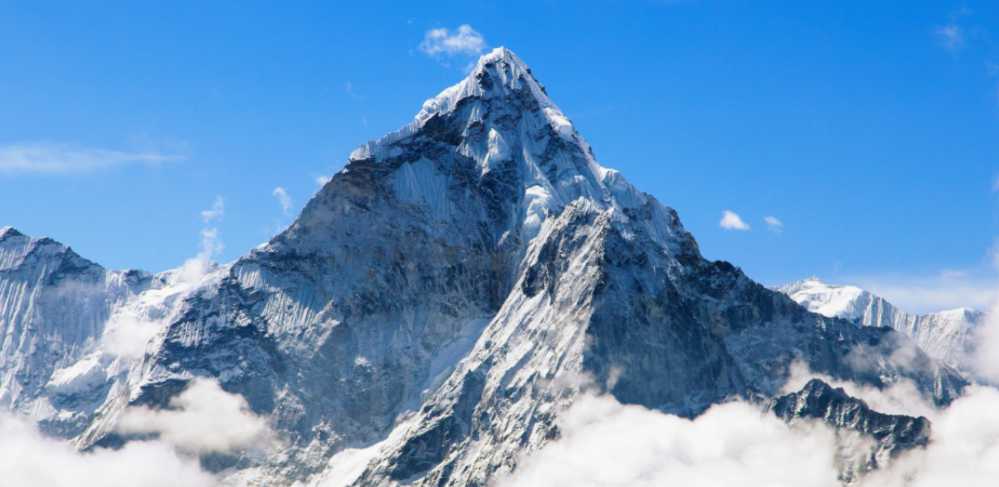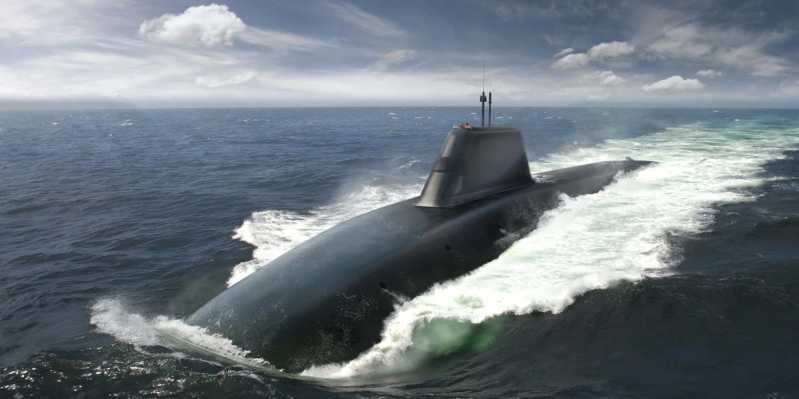In the third episode of "Band of Brothers", there is a plot: Company E of the 506th Regiment of the 101st Airborne Division of the US Army encountered an elite German paratrooper unit. Some soldiers in this paratrooper unit wore a small white flower on the collar of their clothes. This is the national flower of Austria - Edelweiss. Since Edelweiss is usually distributed above the snow line of the Alps (1,700 meters above sea level), it is very difficult to pick, so those who can pick Edelweiss by hand must be brave and strong. Therefore, the Austrian mountain soldiers use Edelweiss as their symbol. Since then, this tradition has also been inherited by German mountain troops and elite troops.
In fact, this tradition is essentially a reflection of the Alpine mountaineering movement that has been extremely prosperous in Europe since modern times in the military field. From the source of thought, in the roar of steam engines, the Industrial Revolution has enabled the material civilization of European countries to develop rapidly, and also given Europeans strong self-confidence. Just imagine, for people at that time, what else could better demonstrate their physical and mental strength than climbing a mountain without the help of mechanical power?
As the highest and largest mountain range in Europe, the Alps naturally became the best goal for Europeans to challenge themselves and nature. This is also the origin of modern mountaineering, and a term "Alpine mountaineering" was created, a mountaineering activity that does not rely on others and relies entirely or mainly on the climbers’ own strength to climb various peaks.
The first attempt
The activity of climbing the Alps began on June 21, 1741. The climbing activity was organized by two British men, William Windham and Richard Pocock. The climbing team had a total of 6 British climbers and 5 servants. They came to the Chamonix Valley in the Alps in France (now it has become the mountaineering and skiing center of France). Because they were worried about being attacked by locals, the entire climbing team was fully armed. However, they were received by the residents of the Chamonix Valley and reached the nearby Bosens Glacier under the guidance of the locals. Although the locals dissuaded the climbing team from continuing to the Melde Glacier ahead, the group continued to move forward. On the second day after arriving in the Chamonix Valley, they climbed for 4 hours, crossed the forest, and arrived at Montanville, where they could overlook the glaciers in the arc zone of the Alps.

Although Windham and Pocock’s climbing team were not the first outsiders to arrive in the Chamonix Valley, and their manuscripts were only circulated in a small range in the form of handwritten copies, they quickly caused a craze in Europe.
In 1760, the most famous visitor to the Chamonix Valley, the Swiss Horace Benedict de Saussure, who laid the foundation for the later conquest of Mont Blanc (French: MonBlanc, Italian: Monte Bianco, the highest peak in the Alps, 4810 meters above sea level, also translated as Mont Blanc), arrived in the Chamonix Valley. A few years later, he became a professor of natural philosophy at the University of Geneva, but he insisted on exploring the Alps despite his success.
Between 1760 and 1790, he crossed the Alps 14 times through 8 different routes and more than 13 expeditions. But de Saussure did not conquer Mont Blanc. In 1760, accompanied by his guide Pierre Simon, he climbed the 2525-meter-high Brevent Peak along the trail and observed the local glacier terrain here. He then posted a bounty notice in Chamonix, offering a "very substantial" reward for anyone who found a route to Mont Blanc. Unfortunately, the notice did not attract the interest of the locals. In 1762, Pierre Simon made a reconnaissance trip along the Melde Glacier. As a famous local guide, he discovered the route to the Talfre Glacier, which was rich in crystals, and that this route did not lead to the highest peak of Mont Blanc as previously speculated. A few weeks later, Pierre Simon finally found a zigzag path that could be climbed on the Montagne de La Cote ridge, and finally reached the Junc Sainte Glacier. However, there is currently no evidence that Pierre Simon had officially climbed Mont Blanc.
In the summer of 1775, Jean Nicolas Courtland and four others made the first attempt to climb Mont Blanc, but they were blocked at an altitude of nearly 4,000 meters and the team was forced to return. The snow on the way softened due to the sun, making the descent more dangerous, and Courtland almost died because the snow bridge under his feet collapsed. The experience of the four people made it impossible for anyone to climb Mont Blanc for eight years.
Challenge Mont Blanc
In 1784, Michel-Gabriel Packard, a 27-year-old local doctor, started climbing from Saint-Gervais and successfully reached the Degut platform without ropes, ice axes, and crampons. This route later became a traditional climbing route. In September 1784, Geneva artist and writer Marc Theodore Bray organized a new attempt to climb along the Saint-Gervais route.
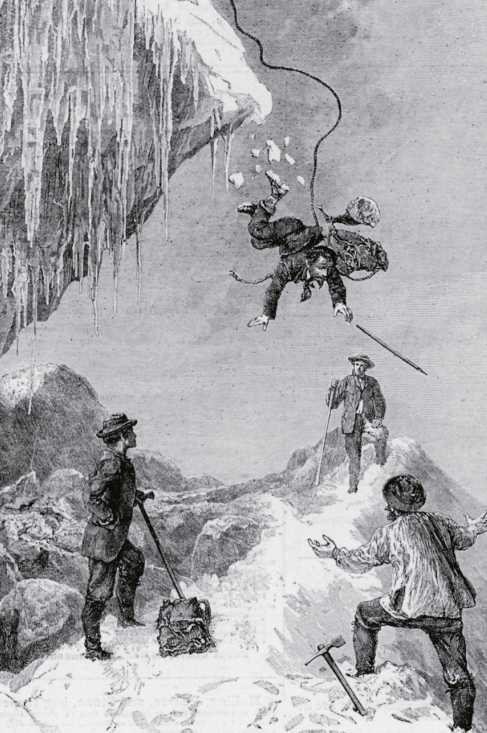
In June 1786, the safe route to the top of the mountain from the other side of Chamonix was discovered by Francois Packard and Joseph Karl when they climbed along the Juncson and Planta Plateau routes, and reached the Didom Pass at an altitude of 4,360 meters. The final route to the top was discovered by Jacques Balma, a 24-year-old mountain guide who was not well-known at the time and made a living by farming and exploring crystals.
On August 7, 1786, Jacques Balma and Michel-Gabriel Packard began their official challenge to Mont Blanc. The two set out from the Arve Valley along the mountain road of Montagne de La Cote. The only items they carried with them were a blanket, a thermometer, a barometer, and two trekking poles. At 4 a.m. on August 8, they crossed the ice crack of Jungkesheng and reached the Plant Plateau. Under the witness of the German Baron Adolf von Scholdoff with a telescope, according to Baron von Scholdoff’s records, the two completed the summit of Mont Blanc at around 6 p.m. However, for these two earliest modern mountaineering explorers in human history, the real difficulty was still to come. That is, how to safely leave the summit of Mont Blanc without all modern mountaineering equipment including crampons and ice axes?
At 6:47 p.m., Balma and Packard began to leave the "Top of Europe". The two relied on the iron heads of the trekking poles they carried to control their speed. After sliding down the large snow slope between the summit and Mel de La Cote quickly, they turned to the left. After finding the footprints they had taken when they climbed the mountain, the two carefully followed the footprints down and reached the Plante Plateau through the steep ice slope that is now the "Old Pass". Because there is an ice cave on the pyramid-shaped peak, they had to descend to the Damontanedraquette moraine at an altitude of 1,600 meters. At dusk when the sun was about to set, they passed the seracs and cracks in the Ikesheng area and set up camp on the stone ridge for the night at nearly midnight. On the next day, September 9, the two took 4 hours to successfully descend the mountain, completing the first complete mountaineering expedition in the modern sense of mankind. The price was that both of them had traces of frostbite on their hands, and Packard had mild snow blindness.
With the conquest of the highest peak in the Alps, Europeans began to climb other peaks in the Alps one after another.
Traveling all over the Alps
At 4 pm on July 23, 1801, Pietro Sciodani, a doctor from Piedmont, climbed the Rosa Peak of the Rosa Mountains. At the summit, at 4,046 meters above sea level, he also wrote a letter to Michael Cusa, a notary in the nearby town of Valla.
In 1819, Joseph Zumstein, a forest ranger in the Gressonne forest, led a team to climb the Rosa Mountains. After reaching the Zumstein Peak, which was named after him, he mistakenly concluded that the highest peak of the Rosa Mountains should be above sea level 15,600 feet, and its height must be higher than Mont Blanc. He measured the height of Zumstein Peak as 5,067 meters (the actual height is 4,563 meters).
In 1834, Giovanni Neferti, a priest of the Alani Vallesia Parish, began to attempt to climb the Signal Peak. After the first failure, he made two more unsuccessful attempts to climb in 1836 and 1839, and finally completed the climb successfully in the summer of 1842.
On July 14, 1865, Edward Whyble and guide Michael Crozier and seven others completed the climb to the top of the Matterhorn Peak at an altitude of 4,478 meters. However, an accident occurred on the way back. Due to the lack of experience of the young climber Hardou, he slipped on the Lion Ridge and knocked Crozier off the cliff. At the same time, the rope pulled down the other two team members, Peter and Douglas. Fortunately, the rope broke in the end, so the other three survived.
In 1864, the British Edward Whyble completed the climb to the top of the Baird Ecrins Peak at an altitude of 4,101 meters.
In 1877, a mountaineering team composed of French Pierre Gaspard and others successfully climbed the last unclimbed peak in the Western Alps, the Meyer Peak. From then on, the era of mountaineering conquest ended and mountaineering began to become a simple sport.

For a long time, the Alps has been a hot spot for European mountaineering, so it is called the "European playground". From the late 19th century to the early 20th century, with the further development of mountaineering technology, the competition for conquering the peaks of the Alps became more intense. In this process, a large number of mountaineering techniques and equipment were accumulated. For example, the ice axe has a shovel head like a pick and a shovel, and the length has become shorter. In 1908, the British invented 10-tooth crampons, which reduced the difficulty of climbing ice and snow slopes.
At the same time, the number of mountaineering expeditions began to grow exponentially. A new era of mountaineering has arrived! This time, climbers have set their sights on the Himalayas, known as the roof of the world.
A failed sprint
In fact, as early as 1909, Mamoli Fleischfeld and his guide climbed the Golden Throne Peak at an altitude of 6,980 meters, which started the craze of Europeans climbing the Himalayas. In 1907, Tom Longstaff and two companions completed the climb of Trent Peak at an altitude of 7,120 meters.
On December 20, 1920, the British mountaineering team began to challenge Mount Everest, the highest peak in the world. This climb was led by Charles Kenneth Howardbry, who was familiar with mountain operations, and Harold Rabin, a climbing guide in the Scottish mountains and the Alps. The mountaineering team left Darjeeling on May 13, 1921, and crossed Sikkim into the Tibet region of China. Later, near the Kangbazong Fortress, they joined another team of mountaineering explorers. However, on the way, team member Alexander Krass died of a heart attack, and then the guide Harold Rabin had to return to Darjeeling to recuperate due to severe altitude sickness. The team did not continue to move until several topographers drew a topographic map of the local river valley and plateau.
On July 1, two climbers from the expedition ventured up the main section of the Rongbuk Glacier. A few days later, they observed a secondary peak at an altitude of 7,000 meters, so they mistakenly thought that they could only get close to the summit by passing through the valley in the east of Rongbuk Gorge and climbing to the ridge. But after actually moving, they found that the road was blocked, so they had to descend to the high ground and then climb other valleys to climb the Lakpara Pass at an altitude of about 7,000 meters. After that, the climbers reached an altitude of 5,500 meters.
On September 24, the first group of members reached the North Col and finally summarized the most reasonable climbing route, but the bad weather in the autumn that followed forced them to return. A few months later, another mountaineering team left Britain and tried to climb Mount Everest. This time, they had Sherpas from the mountains of Nepal join as porters and were equipped with an oxygen system of more than 15 kilograms. However, their attempt failed in the end due to blizzards and avalanches, and 7 Sherpas died in avalanches, so the mountaineering team had to return.
In 1922, a new mountaineering team went to Mount Everest again. The mountaineering team arrived at Rongbuk Monastery in April. This time, the mountaineering team made a detailed plan. They used the latest oxygen equipment and decided to set up no less than three camps at the North Col. However, only one person reached an altitude of 8,570 meters in the end. After that, two more team members tried to reach the summit, but they disappeared at an altitude of about 8,450 meters and failed to reach the summit again.
On April 16, 1933, a new mountaineering team arrived at Rongbuk Monastery. Some of the team members this time also participated in the failed climbing operation in 1922, so they were more experienced. However, this time the climbing operation. Finally, due to the physical condition of the team members, they returned empty-handed again.
In 1936, at the request of the Alpine Club and the Royal Geographical Society of the United Kingdom, Hugh Latourage served as the leader of the mountaineering team and led a team of members who had experience in Everest to try to reach the summit of Everest. However, due to the arrival of the rainy season, the mountaineering team had to withdraw at the North Col this time.
In 1938, the last British mountaineering team before the war went to the Himalayas. This time the leader was the experienced Holder W. Telmon. When the team arrived at Rongbuk Monastery, it was the best weather for climbing. However, after the adaptation period, the weather deteriorated, and the strong wind forced the team members to set up Camp 4 at the North Col, and the heavy snow brought great obstacles to the climbing. On July 8, team member Shapto Smith and 7 Sherpas set up Camp 6 at an altitude of 8,270 meters. However, the cold and heavy snow on the second day forced them to give up climbing after only climbing 50 meters.

On July 19, 1939, German-American Fidesz Wiesenaar and Sherpa Pasang Dawa Lama attempted to climb the highest peak in the Himalayas and the second highest peak in the world, K2. However, when they reached an altitude of about 8,400 meters, at the firm request of Pasang Lama, Fidesz Wiesenaar had to give up climbing K2. During the mapping process, Pasang Lama’s crampons had problems, which led to a fall. This forced the two to rest for a day at Camp 9. The next day, the two descended again, heading for Camp 8 at an altitude of 7,712 meters, trying to find replacement crampons and stored food there, but there was only American climber Dudley Wolf waiting for them. The three had to continue descending. However, during the process, Wolf and Wiesenaar fell, and Wolf had to be left at Camp 7 while Wiesenaar and Pasang Lama continued to descend. The two eventually arrived at Camp 2, where they spent a night before finally reaching the moraine. Afterwards, someone went up the mountain to try to rescue Wolf, but because of a sudden illness, they had to abandon the rescue plan.
On July 29, the three managed to go to Camp 7, but Wolf was unable to go down the mountain with the three. Therefore, the three had to return to Camp 6 to wait for rescue from other Sherpas, but a blizzard came at this time, and the weather did not clear until August 1, resulting in the death of all four people.
Conquering Mount Everest
Due to the outbreak of World War II, all mountaineering in the Himalayas entered a trough. However, Fidez Wiesenaar’s failed attempt laid the foundation for the rise of Himalayan mountaineering after the war. There were also several mountaineering operations during the war. For example, in 1938, a German mountaineering team with a military background attempted to climb from the north side. This mountaineering team did not make more progress than before, but on the way back, due to the outbreak of the war, they were captured and sent to a prisoner-of-war camp in India. Hrish Hall and Osnett in the mountaineering team tried to escape from the prisoner-of-war camp, but were caught when they fled to the Himalayan valley and were severely punished. But the two escaped again, successfully evaded the pursuit of the Sikhs and Gurkhas, and finally fled to Tibet, China, and finally arrived in Lhasa, where they stayed for 7 years.
It was not until 1953 after the war that Mount Everest really welcomed its conqueror. On May 29 of that year, another climbing team once again attempted to reach the summit from the south slope of Mount Everest. The leader of this team was 34-year-old New Zealander Edmund Hillary, and his partner was 37-year-old Sherpa Tenzing Norgy, who lived in Darjeeling, India. This Sherpa had accompanied the British climbing team to climb Mount Everest from the north slope of Tibet, China in 1936 and 1938. In 1951, he and the French team climbed Nanda Devi, which is over 7,000 meters. In 1952, Tenzing Norgy climbed Mount Everest with Swiss climber Redmond Rambo, but at an altitude of 8,595 meters, due to severe fatigue and lack of oxygen, he had to retreat.
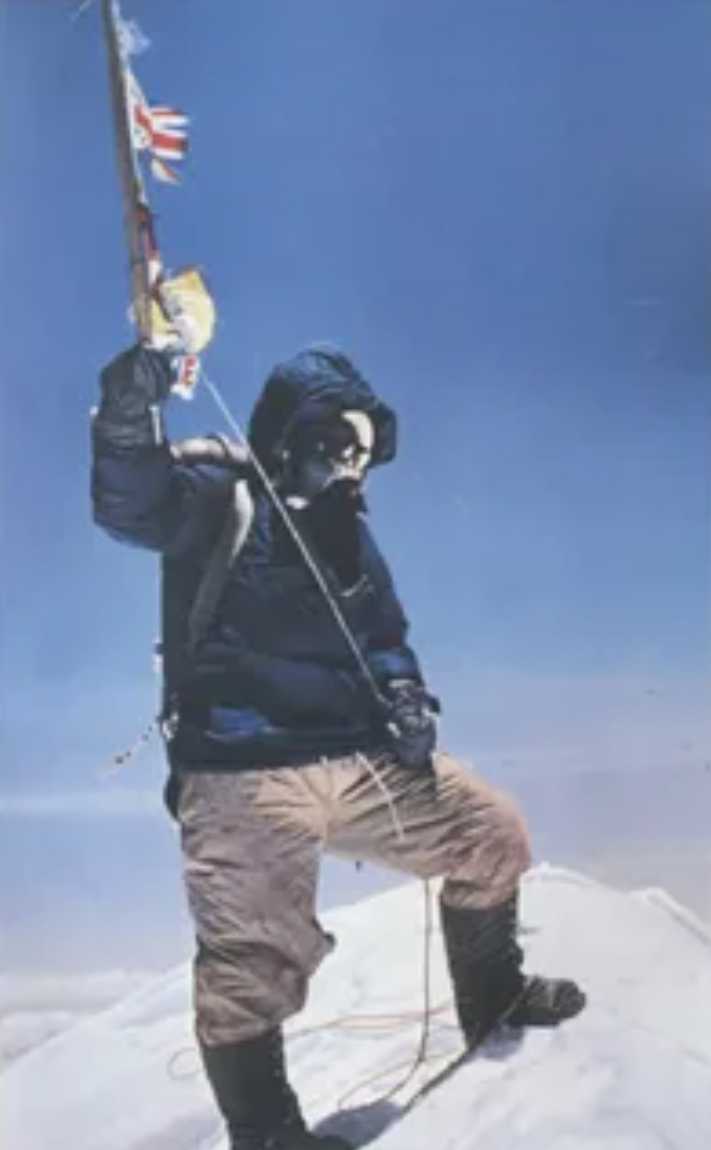
Compared to the experienced Tenzing Norgi, Edmund Hillary’s real profession was actually just a beekeeper. But he spent a lot of time scouting the valleys in the heart of the Himalayas, so he accumulated a lot of theoretical experience.
Earlier, Edmund Hillary and Eric Sharpton discovered from the slope of Pumori Peak that Mount Everest could be climbed from Nepal or Tibet, China. However, due to the repeated failures of the British mountaineering team on the north slope of Tibet, China, Edmund Hillary chose the south slope in the direction of Nepal as the final climbing location after reconnaissance. But even so, the two people’s climb was not smooth. First, Tenzing Norgi’s respirator had problems and a large piece of condensed ice was found after it was disassembled. Then the two encountered a huge and extremely smooth rock. Fortunately, in the direction of Nepal, a narrow crack separated the rock and the snow cornice extending to the southwest, so the two climbed through this section. The ridge after that was relatively simple. Finally, at 11 a.m., the two finally reached the summit of Mount Everest - the top of the world on the snow cap (8,840 meters according to the British mountaineering team).
The subsequent descent was still difficult and dangerous. After passing through vertical steps and narrow snow blades, they rested for a while on the platform under the South Peak. A little further down, two oxygen tanks left by Tom Bodilyren and Charles Evans allowed the two to replenish oxygen in time. Finally, they arrived safely at the South Col. At this point, Mount Everest, the highest mountain on earth, was finally conquered by humans!
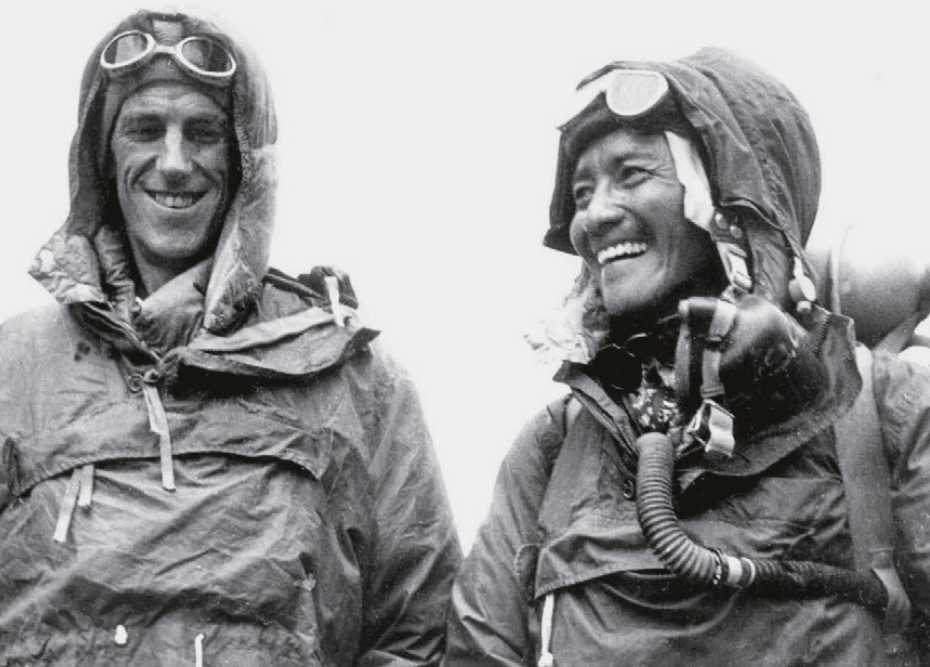
Almost at the same time, the German mountaineering team led by Karl Herrichkofer was finally ready to challenge Nanga Peak, which had swallowed up many Austrian and German climbers. When the captain ordered a retreat due to weather conditions, team member Hermann Bill insisted on climbing to the summit of Nanga Peak and eventually became the first German climber to conquer this "killer mountain". In 1954, an Italian mountaineering team, relying on superb technology and advanced equipment, successfully climbed the world’s second highest peak, K2, even though some team members died of edema and many teammates suffered severe frostbite.
In 1955, with most of the Himalayan peaks conquered, the golden age of Himalayan mountaineering exploration ended. But the conquest of Mount Everest has not come to an end.
In addition, it must be mentioned that those brave climbers also paid a painful price for conquering these majestic peaks. On Mount Everest alone, according to incomplete statistics, 282 people (168 Western climbers and 114 Sherpa guides) died between 1921 and 2016. Among them, more than 200 bodies of the victims remained on Mount Everest forever.
Finally, the author would like to pay tribute to those brave mountaineering pioneers with the famous words of US President Kennedy in his speech announcing the moon landing plan: We do these things not because it is easy, but because it is difficult!


